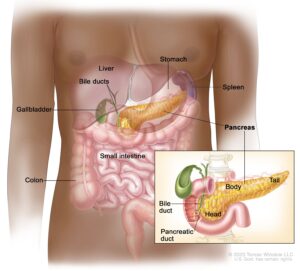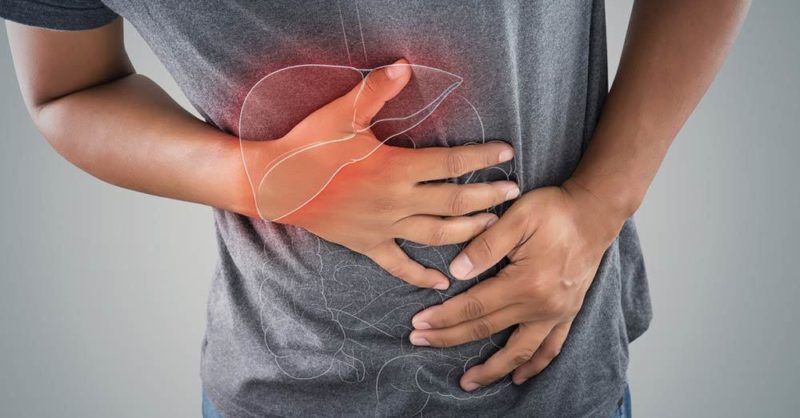From subtle pains to persistent jaundice, understand the varied symptoms signaling the presence of pancreatic tumors. Stay informed to detect potential warning signs early.
By Dr T. Vishnu Murthy
Diagnosing malignant tumors of the pancreas and the periampullary region is a complex and daunting task. The deep-seated location of the pancreas and its protein expressions contribute to the difficulty of early detection and treatment. Despite advancements in diagnostic techniques, pancreatic cancer remains the fourth leading cause of cancer-related deaths.
Demographics and Tumor Characteristics
Pancreatic carcinoma primarily affects males, with a sex ratio of 2 to 1, and the average age of onset is 55 years. The most prevalent type of pancreatic tumor is adenocarcinoma, originating mainly from ductal epithelium. In two-thirds of cases, tumors are found in the head of the pancreas, while the body and tail account for approximately 20% and 10% of cases, respectively. Tumor spread typically occurs through direct invasion of surrounding tissues, including the duodenum, and by adhering to adjacent structures. Metastases commonly target regional lymph nodes and the liver, followed by the lungs, intestines, adrenal glands, bones, and other organs.

Predisposing Factors
Although not definitively established, three frequently cited risk factors for pancreatic cancer include chronic pancreatitis (particularly the calcific type), heavy alcohol consumption, and diabetes mellitus.
Symptoms
Contrary to the belief that pancreatic and ampullary carcinoma are painless, pain is often the first symptom. It presents in three general forms:
- Colicky pain, typically in the right upper quadrant of the abdomen.
- Steady, dull pain in the mid-epigastric region, radiating to the lower back.
- Paroxysmal pain, felt over a wide area of the back, anterior chest, and abdomen.
This pain tends to be severe, progressive, and exacerbates at night, often unrelated to digestive cycles. This pattern may result from tumors infiltrating nerve trunks and ducts, causing a desmoplastic response that encases nerves, ducts, and blood vessels.
Jaundice is the next most significant symptom, occurring in about 75% of cases involving the pancreatic head. It is typically persistent and progressive, potentially becoming severe with accompanying pruritus.
Weight loss is a common and severe symptom, often exceeding 5 pounds per month. Gastrointestinal symptoms, such as anorexia, nausea, and vomiting, although not specific to pancreatic cancer, are frequent. A distinctive feature is an aversion to food rather than true anorexia. Other common complaints include a feeling of gastric fullness, flatulence, and diarrhea, which may or may not be associated with steatorrhea, observed in 15% of cases. Constipation is more common and may relate to anorexia. Gastrointestinal bleeding, indicated by occult blood in the stool, occurs in about 50% of cases, particularly in lesions involving the stomach or duodenum and carcinoma of the ampulla. Thrombophlebitis or phlebothrombosis, especially if migrating and resistant to anticoagulants, can be an early symptom in patients with tumors in the body and tail of the pancreas. Rare manifestations include hypoglycemia, hypercalcemia, inappropriate ADH secretion, excessive ACTH production, and carcinoid syndrome.

Diagnostic Methods
Several diagnostic methods are used for pancreatic cancer:
- Roentgenographic Findings
- Clinical Laboratory Findings
- Pancreatic Drainage
- Radioactive Photo Scanning
- Pancreatic Angiography
- Retrograde Cholangiopancreatography
- Carcinoembryonic Antigen
Pancreatic carcinoma is usually diagnosed either grossly or through biopsy during surgery, although biopsies often reveal only inflammation due to the surrounding inflammatory tissue.
Treatment
In addition to conventional treatments, Ayurvedic medicine offers natural herbal remedies. These treatments aim to minimize side effects and reactions, particularly beneficial for sensitive individuals. Ayurvedic approaches are tailored based on pulse diagnosis to achieve optimal results.
The views expressed in this article are solely those of the author and do not necessarily reflect the opinions or views of this Magazine. The author can be reached at 9650696341

Leave a Reply